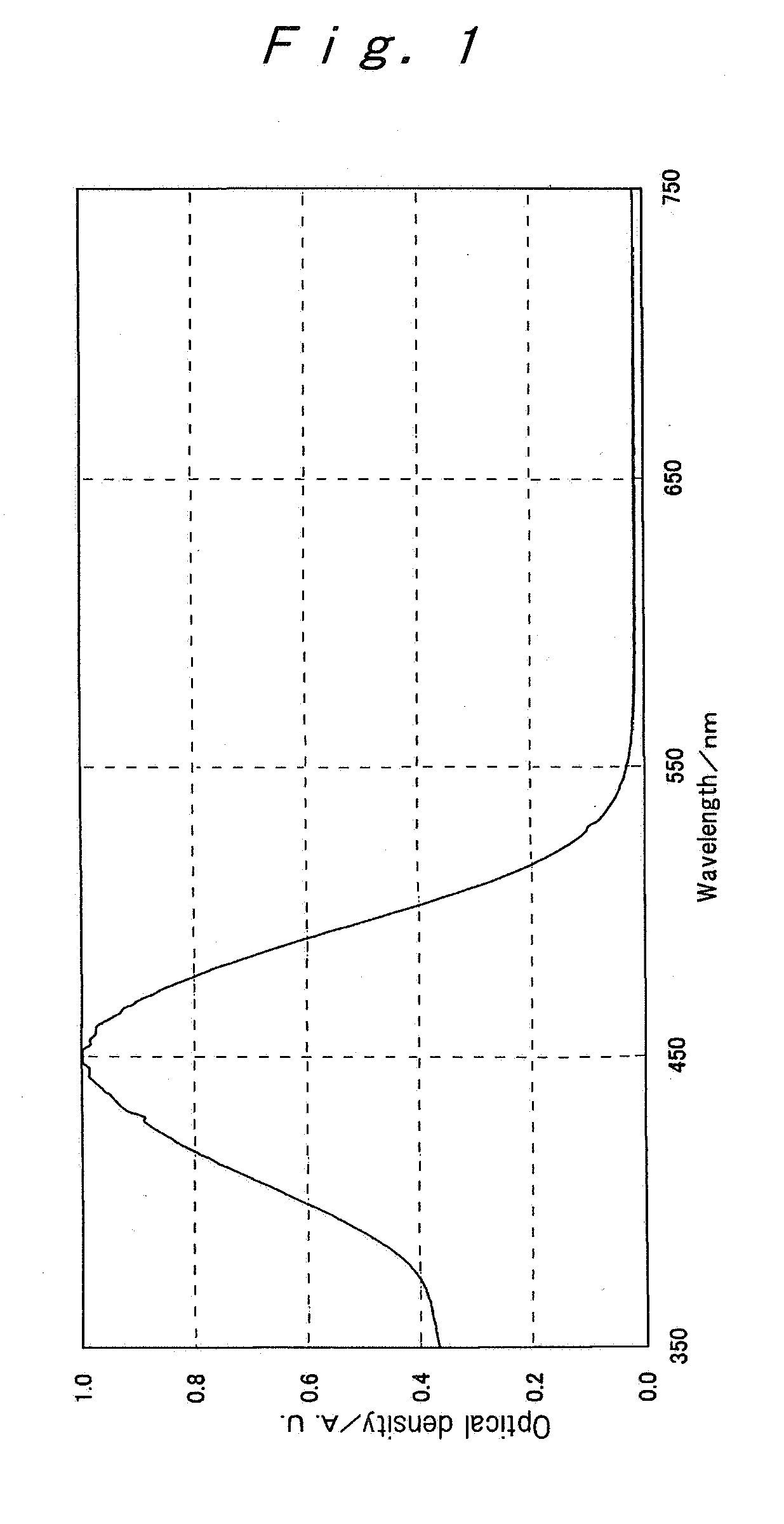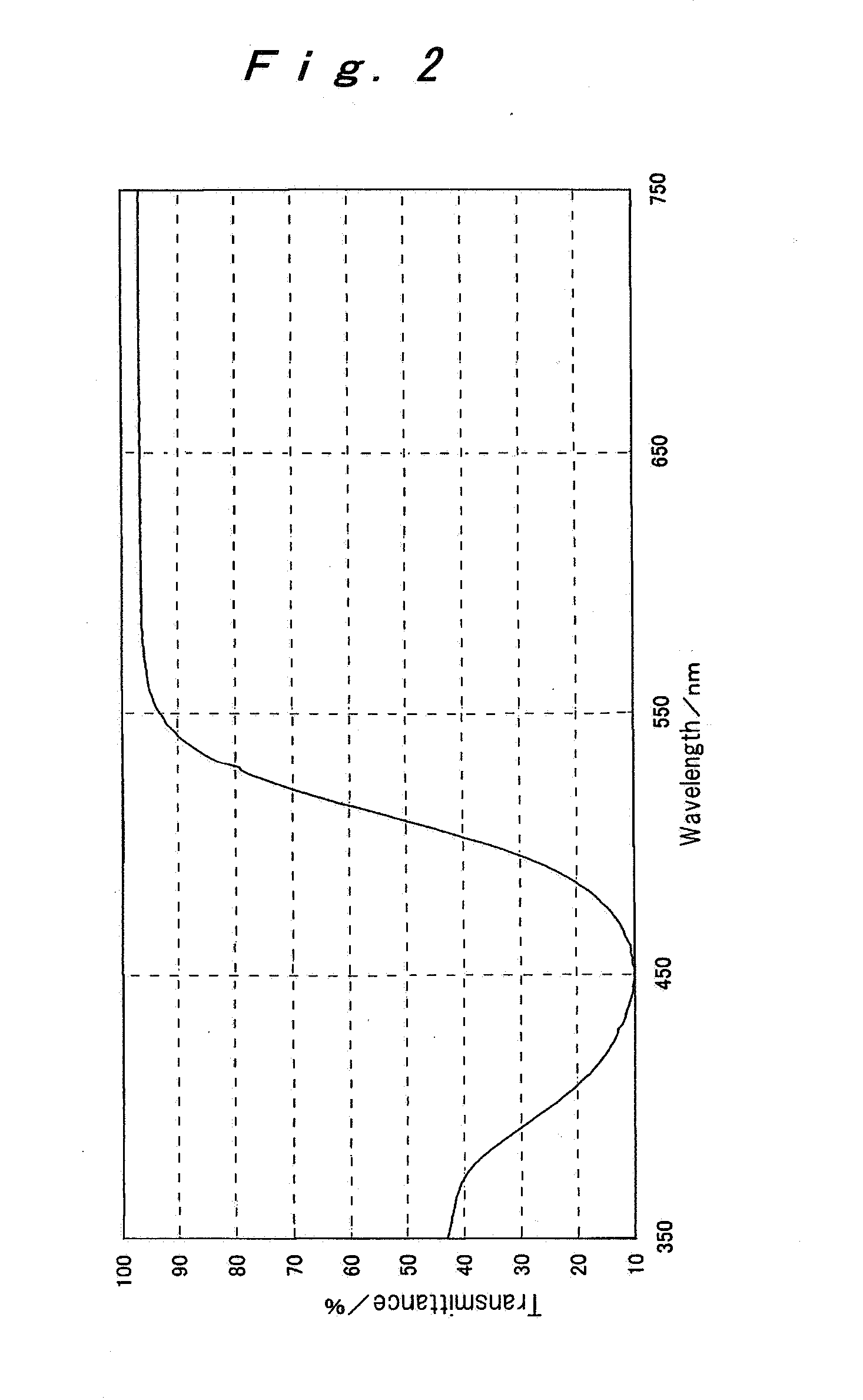Azo dye, heat-sensitive transfer recording ink sheet, heat-sensitive transfer recording method, color toner, inkjet ink and color filter
a technology of heat-sensitive transfer recording and azo dye, which is applied in the field of azo dye, heat-sensitive transfer recording ink sheet, heat-sensitive transfer recording method, color toner, inkjet ink and color filter, can solve the problems of insufficient heat-sensitive transfer recording of high-speed transfer type, limited heat-transfer dye usable in the process, and many dyes that are not enough to meet the requirements of transfer sensitivity, etc., to achieve the effect of controlling charge and fluid fluid
- Summary
- Abstract
- Description
- Claims
- Application Information
AI Technical Summary
Benefits of technology
Problems solved by technology
Method used
Image
Examples
example 1
Synthesis Example 1 (Preparation of Exemplified Compound (1))
[0115]
[0116] A mixture of 41.4 g of 4-nitroaniline (0.3 mol), 84 ml of conc. hydrochloric acid, 60 ml of acetic acid and 84 ml of propionic acid was stirred at an inner temperature ranging from 0° C. to 5.° C. To the mixture was dropped 20.7 g (0.3 mol) of sodium nitrite per 45 ml of water at an inner temperature of 5° C. or less. Thereafter, stirring was continued for 30 minutes at an inner temperature ranging from 0° C. to 5° C. The resultant diazonium salt solution was dropped to 600 ml of acetonitrile solution containing 46.0 g (0.3 mol) of 5-tert-butyl-2-methyl-2H-pyrazole-3-ylamine at an inner temperature of 10° C. or less. After the dropwise addition of the diazonium salt solution, the resultant reaction solution was kept stirring for 2 hours, followed by injection of 1000 ml of water. Then, the precipitated azo dye was separated by a filtration. Recrystallization of the produced crystals was performed with 1650 ml...
example 2
Synthesis Example 2 (Preparation of Exemplified Compound (2))
[0117]
[0118] 150 ml of acetonitrile solution containing 11.1 g (0.08 mol) of 5-tert-butyl-2H-pyrazole-3-ylamine was cooled to an inner temperature ranging from 0° C. to 5° C. To the solution was dividedly added 19.0 g (0.08 mol) of p-nitrobenzenediazonium fluoroborate. Thereafter, the reaction mixture was stirred for 30 min at an inner temperature ranging from 0° C. to 5° C. and then for 1 hour at room temperature, and then poured into 500 ml of water. After extraction with 200 ml of ethyl acetate, the extracted ethyl acetate phase was washed twice with a saturated aqueous sodium bicarbonate solution and then twice with a saturated brine. The ethyl acetate solution containing a dye was heated up to an inner temperature of 55° C., followed by addition of 600 ml of hexane. Crystallization was performed, to obtain Intermediate (2a). Yield: 15.7 g (68%).
[0119] A mixture of 2.88 g of Intermediate (2a) (0.01 mol), 1.38 g of po...
examples 3 to 11
[0120] Exemplified compounds (3) to ( 11) were synthesized in the manners according to the Synthesis Examples 1 and 2. The maximum absorption wavelength in each of absorption spectra of the thus-obtained Exemplified compounds (3) to ( 11) in an ethyl acetate solution (density: 1×10−6 mol / L, Optical path length: 10 mm) and the melting point of each of these compounds are shown together with those of the Exemplified compounds (1) and (2) obtained in the Synthesis Examples 1 and 2.
TABLE 1Maximum absorptionMelting pointDyewavelength (nm)(° C.)(1)444199˜200(2)446150˜152(3)446127˜129(4)446124˜125(5)446129˜131(6)446130˜135(7)446120˜123(8)446121˜129(9)446129˜134(10) 401218˜219(11) 460224˜225
PUM
| Property | Measurement | Unit |
|---|---|---|
| absorption wavelength | aaaaa | aaaaa |
| absorption wavelength | aaaaa | aaaaa |
| thickness | aaaaa | aaaaa |
Abstract
Description
Claims
Application Information
 Login to View More
Login to View More - R&D
- Intellectual Property
- Life Sciences
- Materials
- Tech Scout
- Unparalleled Data Quality
- Higher Quality Content
- 60% Fewer Hallucinations
Browse by: Latest US Patents, China's latest patents, Technical Efficacy Thesaurus, Application Domain, Technology Topic, Popular Technical Reports.
© 2025 PatSnap. All rights reserved.Legal|Privacy policy|Modern Slavery Act Transparency Statement|Sitemap|About US| Contact US: help@patsnap.com



